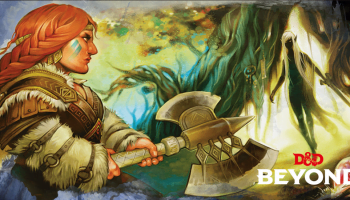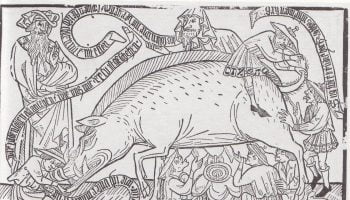Part XXXVII in our ongoing series on Race, Racism and the Middle Ages, by James Hill. You can find the rest of the special series here.
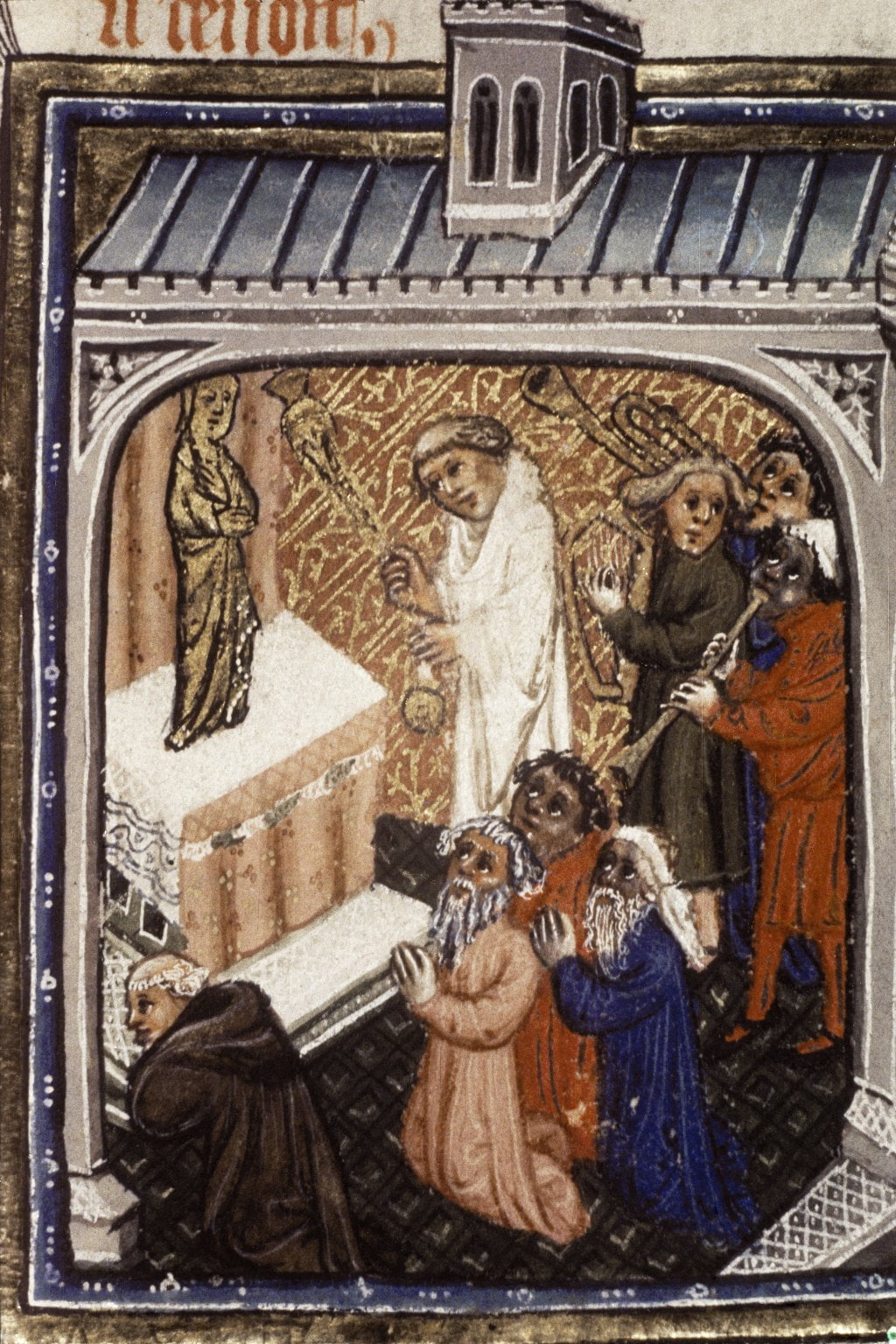
In my previous article, I discussed how unconcerned medieval European travel writers were with the skin colour of the people they encountered in other parts of the world. But there was one thing these travel writers described about virtually every tribe, individual, or kingdom they encountered: their religion. Faith was an object of intense fascination that permeated the medieval worldview in a way physical ‘racial’ differences do not appear to have done. It might seem surprising that physical differences appeared to be so unimportant to medieval writers, but it is probably less surprising that discrimination was not absent: in medieval travel writing, it often manifested as religious prejudice.
For travel writers like Marco Polo, John Mandeville, or William of Rubruck, there was a fairly standard way of introducing a new people in their texts: their name, their faith, and a couple of pertinent points about them—usually a cultural practice or an interesting anecdote. That’s not to say that these writers had much in-depth knowledge about the religious practices of any given area. Some writers, such as Mandeville, probably didn’t actually go anywhere and were dependent on other sources for their information. However, none of this stopped them from opining about other faiths.
You’ve Got To Have Faith
For these writers, the world fell into five broad categories. People were either:
- Christian (even if they were ‘heretics’, they were still Christians),
- Muslim,
- Jewish,
- ‘Pagan’, or
- ‘Idolaters’.
The last two terms—‘pagan’ and ‘idolater’—are not always used consistently, and they can hold different meanings, even within these texts. But the general distinction is that shamanistic or animistic practices are described as ‘pagan’, while more organized faiths such as Buddhism or Hinduism are described as ‘idolatry’. This doesn’t hold true for other medieval texts, and polemicists were happy to pile terms on other faiths, but within travel writings, which were ostensibly aiming to be geographic works, the distinctions are comparatively consistent.
These European travellers were definitely interested in other faiths, and not always to blanketly condemn them. In some instances it was to understand them—if through a vastly imperfect lens, and from a generally assumed position of religious superiority. Descriptions of people’s religious sensibilities take up a huge amount of space in these works, and they are often tied to social and cultural curiosities. For example, Marco Polo reports that the whirling dervishes of Tibet are ‘wicked’ and ‘sorcerous’. But to him, the Buddhist monks of China are devout and praiseworthy for their discipline, charity, and learning.
In many cases, though, the narrators are intent on forming alliances and converting the people they encounter. The religious neutrality expressed by the Mongol khans is a source of frustration for friars like John of Plano Carpini and William of Rubruck (who I introduced in my previous article). These men, both missionaries and diplomats, initially misunderstand the khans’ invitations to Christian missionaries into their courts as encouragement, but are then disappointed when the khans decline to convert. John reports that he was assured by Christians in the emperor’s household that ‘they believed he was about to become Christian’, as he kept ‘Christian clerks, and he has always the chapel of Christians in front of his great tent, and they were allowed to chant publicly and openly’. This optimism does not appear to have borne any fruit though. William also hoped to convert the Mongols during his visit. He justifies his visit to the Golden Horde by saying,
We have heard say in the Holy Land that your Lord Sartach is a Christian, and greatly were the Christians rejoiced thereat… it is for this I wish to go to Sartach and carry to him letters of the lord king, in which he admononisheth him of the weal of all Christendom.
His mission hit rocky ground when he discovered that Sartaq (the son of the khan, Batu) was not in fact a Christian at all, even if he sometimes showed preference to them, but was a Mongol first and always. The tolerance of all faiths in the courts of the khans did provide an opportunity for substantial discussion about the superiority of Catholicism against other religions and strands of Christianity, however, and William takes pleasure in asserting the superiority of Latin learning (by his own account) over the local Nestorians. But ultimately, he fails to convert the Mongols, or anyone else, and seems to have not made much of an impression locally.
Of course, many of the non-Christian characters portrayed in these travelogues are said to be wicked. The friars describe many of the Mongols (‘Tartars’) as greedy, materialistic, and petty, insisting on gifts and robbing the Christian authors. Polo depicts Muslim leaders as avaricious; we are told that Ahmed, the minister of finance to Kublai Khan, was assassinated due to his great power, and his even-greater financial corruption. Polo also tells us that the last Caliph of Baghdad was killed by being locked in his (full) treasury by the Mongols until he starved because of his greed and poor rule in failing to defend his city with his great wealth. That this ever actually happened is, seemingly, immaterial (the Caliph was executed by the Mongols, but he was killed by being trampled with horses).
‘Idolaters’ are often portrayed as sexually promiscuous, and sometimes those descriptions are salacious, such as when they enter into shocking non-monogamous relationships or do not wear ‘enough’ clothes for the comfort of the writer’s sensibilities. Marco Polo recommends that any man between 16 and 24 should visit a small region of Southern China because of their peculiar marriage customs:
nothing on earth would induce a man to marry a virgin; for they say a woman is worthless unless she has been intimately acquainted with many men… This, then, is how they go about getting married. You may take my word for it that whenever foreigners pass through this region and pitch their tents to make camp, the old women from the villages and hamlets bring their daughters, twenty or forty at a time, and thrust them at the men, begging them to have their way with them and sleep with them. And the chosen girls stay with the travellers, and the rest ruefully return home. The men are free to take their pleasure with them as long as they remain, but are not allowed to carry them off anywhere else. And when they have had their fill and are ready to leave, it is customary for each to give a jewel or token to the women he slept with, so that she can prove she had a lover when she comes to marry. Custom dictates too that before a girl can think of marrying she needs to have more than twenty of these tokens around her neck as proof that she has had many lovers and slept with many men.
The story goes on, but you get the idea. There are many similar stories of sexual openness, prostitution, and other exoticising narratives of women in the East. Many, or perhaps even all of these narratives were fictional. But they signal a beginning to a very long trend of exoticisation, objectification, and sexualisation of southeast Asian women by European men.
Despite glaring examples like this, non-Christian people are not always described in negative terms. The yogis of India are praised for their simple way of life. The astronomers of China are lauded for their great wisdom. The khans are often portrayed as very generous and just. The technological and social advancement of Chinese society was a marvel for travellers. Additionally, many of the peoples of the world are merely identified, and not judged. In all cases though, the reader is keenly aware of the faith of these people, whether they were good, bad, or simply there. This shows what writers thought was important information for their audience: a people’s religious and cultural practices were much more important than their physical characteristics. Perhaps it is this privileging of the substance of a person over their appearance that led to the apparent belief by some medieval Europeans that a person’s physical characteristics could change. If a physical characteristic represented a part of the character of a person, it had to be able to change with religion or culture, and could not be as important as the internal thing it reflected.
Monsters in the Deep
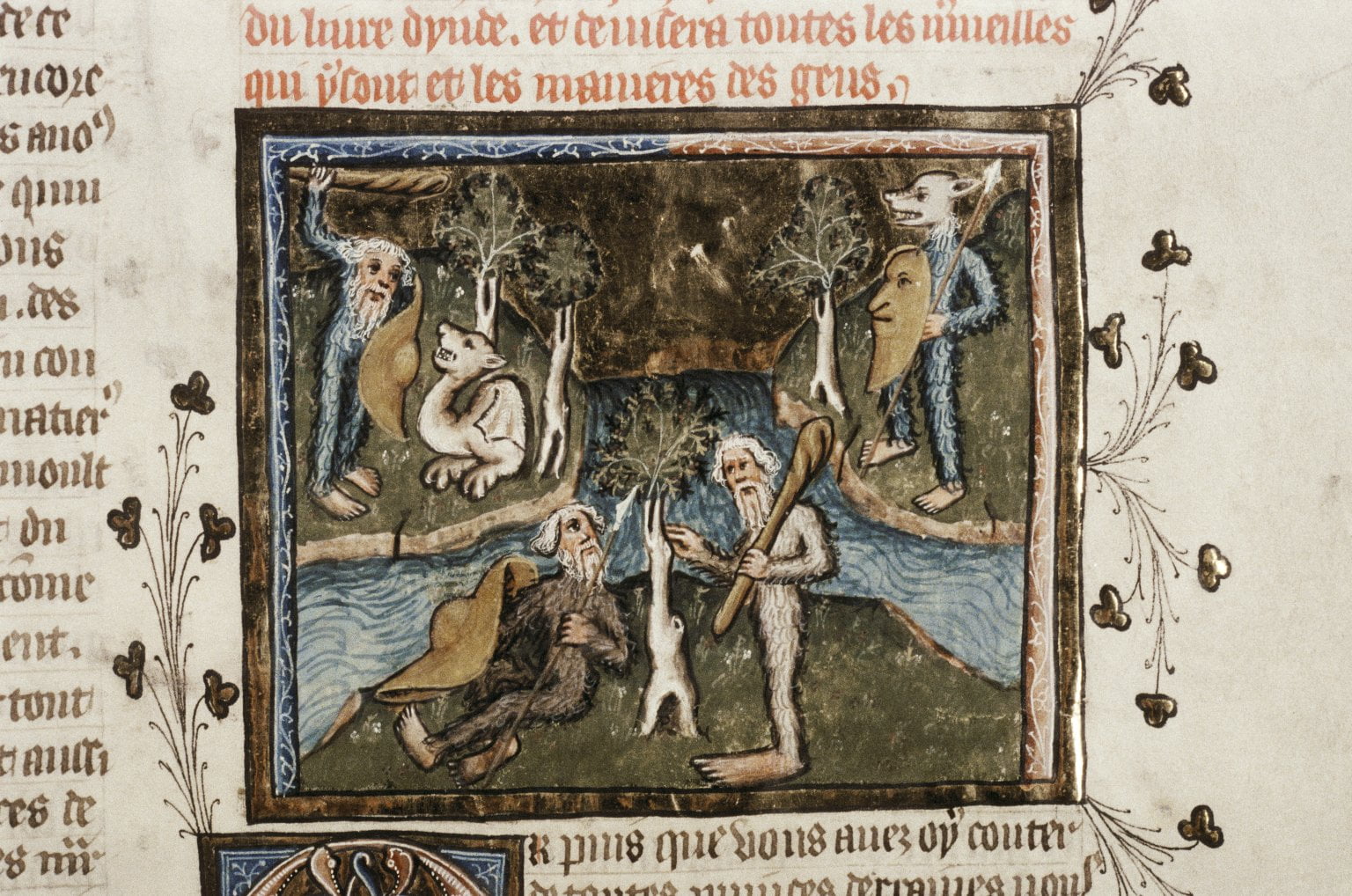
The one set of people whose appearance takes priority over all other factors is the ‘monstrous peoples’ that occupy the pages of stories like John Mandeville’s Travels. These monstrous people are identified by their physical characteristics alone: men with dog’s heads, people with their heads in their chests, a people with a single leg they used to shade themselves from the sun. It is easy to tell that these are pure fiction (not just because we know that they are not real) but because in these works, they never have any contextual information. There are no descriptions of their cultures or religious practices, just their appearances. They are nothing more than their bodies. Most humans seem to be the inverse: little more than their religion and culture.
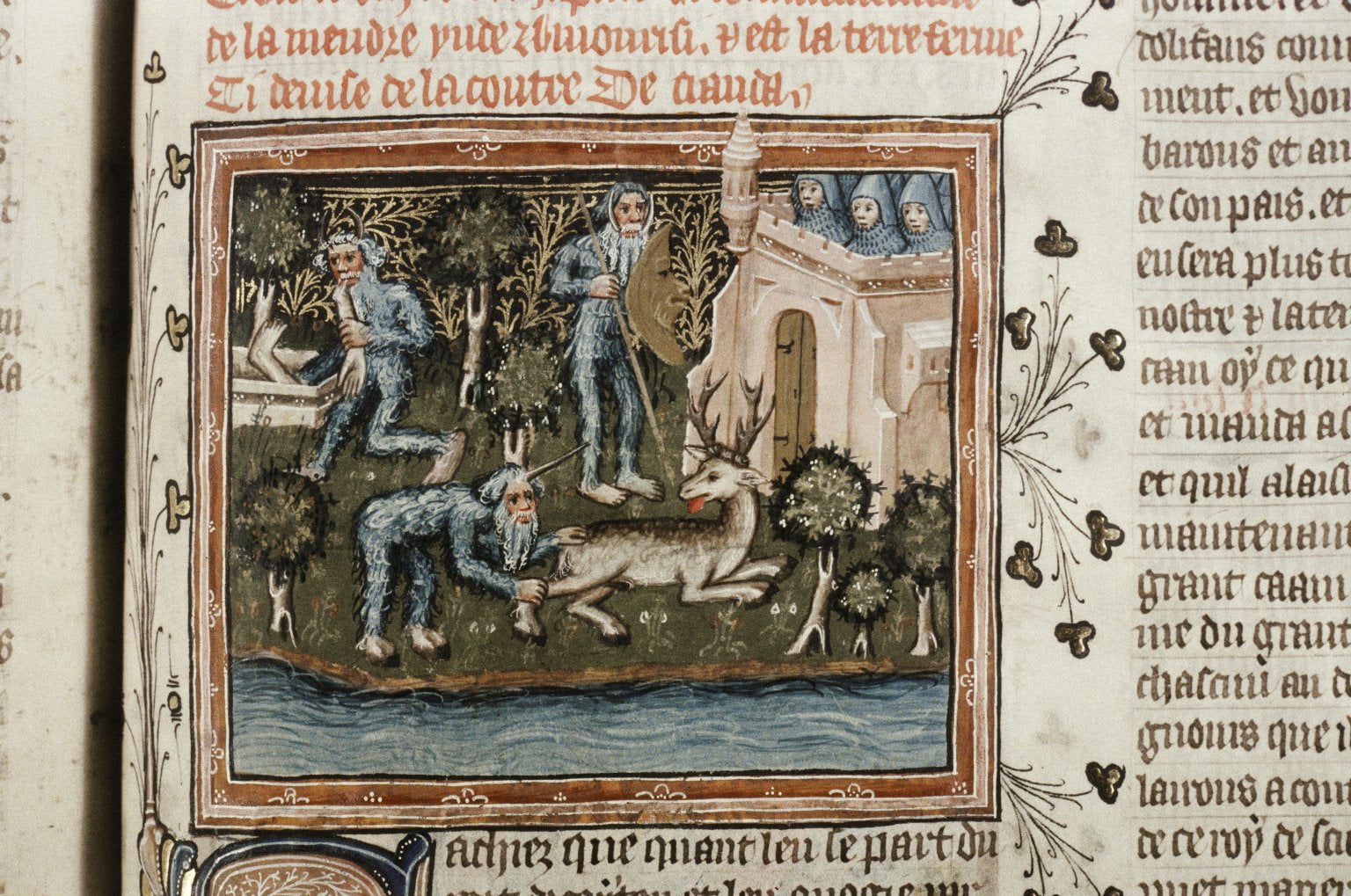
These mythical people usually come tacked on to the end of a survey of the world. They are always in far-off lands that the narrator does not actually visit, and separate from descriptions of ‘real’ people. For example, the story of the one-footed people in Mandeville’s book is separated from a much-more-detailed description of the Nubians, the Ethiopians, and the other peoples of what was referred to as ‘Assyria’. Other examples contain ‘wild men with horns on their heads’, who ‘dwell in woods and do not speak’, ‘ugly folk without heads, who have eyes in each shoulder; their mouths are round, like a horseshoe, in the middle of their chest’, ‘people who have feet like horses, and run so swiftly they overtake wild animals and kill them for food’, or ‘giants, foul and horrible to look at, who have only one eye’.
Many of these stories come from older classical myths. For instance, the dog-headed tribe of Northeast Asia existed in two separate ancient stories: one Greek, and one Chinese. They are included in the travel narratives of John of Plano Carpini, William of Rubruck (who places them in northeast Asia like the Chinese legend does), Marco Polo (who places them in North India, following Pliny), and John Mandeville (who oddly places them in Indonesia). It seems that dog-headed people were an expected part of the genre. But none of these writers treat them in the same way they treat the humans they encounter. The writers never describe them in any further detail other than explaining that they are a people with dog’s heads instead of human ones.
We can only assume that ‘monstrous’ peoples were to be seen as geographically linked to, but not the same as, actual humans. A monstrous people’s religion is never described in these travel texts. Medieval travel texts do not assess the morality of monstrous peoples, and they are not explicitly linked to ‘human’ races. Mandeville has a single paragraph devoted to them (with the occasional sentence elsewhere), and it is purely descriptive. Polo and William of Rubruck are similarly terse. Human people, whose faiths are examined in depth, are rarely given much in the way of a physical description. Monstrous people have nothing else.
How much should we assume that the stories of these monstrous peoples were supposed to reflect the real world, or even the imaginative landscape? It is unclear whether a medieval audience was even supposed to be treating them as real; travellers, despite regularly populating the world with such monsters, never seemed concerned about bumping into them. No one ever claims to have seen or interacted with them. Perhaps their main purpose is to conjure exoticism, adding drama and mystery to an area that no one will go.
So, Were Medieval European Travel Writers Racist?
In modern terms, these medieval European writers did not appear to make the same assumptions about people that constitute textbook racism today. They do not link skin colour with moral worth. They do not connect physical or intellectual characteristics to ‘racial’ characteristics like skin, eye, or hair colour. These features all crop up here and there: sometimes in classical works, sometimes in high medieval ones, and quite regularly in early modern texts. But the late-medieval travel writer did not define race the way we do today. This was not simply a quirk of genre, either. Earlier geographic works, particularly classical ones, were very happy to speculate about skin colour and its meaning. The fact that medieval ones don’t suggests that something else is happening.
Given the disinterest in the physical manifestations of difference in these examples of medieval travel writing, it would be tempting to say that racism wasn’t a feature of medieval Europe. But this is only possible if you use a very narrow, very modern understanding of what ‘race’ is. Travel writers divided up the world and stereotyped just as much as anyone else. But their social priorities do not seem to map particularly closely to our own. To the medieval traveller, the divide between faiths seemed to eclipse, almost entirely, the physical differences between them and other people. Faith was, by far, the most important factor in describing the world and ascribing meaning to actions.
People in the Middle Ages were certainly not model egalitarians. They were completely capable of disgust at other cultures and vitriolic hatred of other faiths. That hatred was just based on somewhat different criteria. Many medieval Europeans were not very tolerant of religious, social, or cultural differences. This can be thought of as ‘racism’, but a racism organised across very different lines, or perhaps not especially organised at all.
But there is a glimmer of hope as well. When medieval Europeans left Europe (or even just imagined leaving Europe), they did not treat everyone they met with scorn. These writers frequently show the humble, intrepid, and inquisitive spirit that has been the hallmark of great travellers throughout time. They reveal the two faces of travel—that of imposing your own values upon other cultures that you instinctively define as ‘inferior’, or of approaching them as men and women who display all the various ways in which a life can be lived well.
If you enjoyed that article, please share it with your history-loving friends on Facebook, or on Twitter! And be sure to subscribe here to receive every new article from The Public Medievalist the moment it launches.
